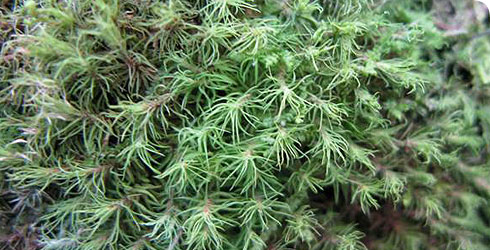Syrrhopodon mahensis
The moss Syrrhopodon mahensis is named after Mahé, the largest of the Seychelles Islands, where it was first discovered in 1876.
Shoots of Syrrhopodon mahensis form tufts and mats, which are golden to pale-green and often tinged with traces of a vivid red.
Like other members of the tropical moss family Calymperaceae, S. mahensis has leaves with a distinctive basal region. This is formed by large empty, transparent cells, which contrast sharply with the small chlorophyll-containing cells that compose the upper part of the leaf.
Species detail
-

Taxonomy
Syrrhopodon mahensis has lance-like leaves with distinctive features. Find out how they can be used to distinguish this species from its close relatives.
-

Distribution and habitat
Syrrhopodon mahensis flourishes in shady tropical forest and is only found on a few islands in the western Indian Ocean. Find out more.
-

Conservation
This moss is common in its limited geographical range, and is well established in some protected national parks.
-

References
Get reference information for Syrrhopodon mahensis.
Images

Syrrhopodon mahensis was discovered in the Seychelles Islands is 1876.

Leaves of Syrrhopodon mahensis showing details of the leaf margin.
Author
Len Ellis
Curator, Bryophytes, Botany Collections Team, Department of Botany.
A word from the author
'The beauty of mosses is most apparent when they are viewed through a microscope and is therefore relatively inaccessible to the non-specialist. Syrrhopodon mahensis is a colourful, exotic species that can be appreciated without recourse to powerful magnification.'
Toolbox
Glossary
Tree boles are tree trunks.
